1.
Tag Archives cover crops

Ontario farms are a small business backbone but red tape delays and obstacles hinder growth
Paperwork volume and complexity for approvals and funding can be a stumbling block
Farms are part of Ontario’s small business backbone, whether Ontario-grown livestock, grains or horticulture foods and farm products are bought on-farm, at a local market, or at the local store.
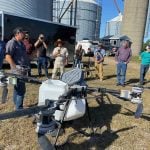
Video: Drones a tool for earlier cover crop planting
The first of a three-year project has found more biomass from earlier drone broadcasting of seed
Drones are a tool that can help with cover crop planting in still-growing corn and soybeans.
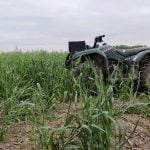
Approach cover cropping strategically
Top tips from Lee Briese, 2025 International Certified Crop Advisor of the year
Cover crops, employed strategically, can target soil health, production, decrease erosion, address weed pressure and provide increased ecosystem diversity, but the first question a grower must answer is “what are you trying to accomplish? to achieve the highest benefits.

Rotational grazing helps farmers stretch feed in a dry year
Practical tips for planning rotations include pasture math, water access and cover crop grazing options
Rotational grazing can extend the grazing season and improve soil health. Gallagher’s James Clark explained how to plan, manage water, and add cover crops for increased grazing options at Canada’s Outdoor Farm Show.

OMAFA pit shows ins and outs of perennial crops
Economic and environmental benefits of switchgrass and miscanthus
OMAFA displayed the benefits of perennial crops in a pit at Canada’s Outdoor Farm Show 2025.
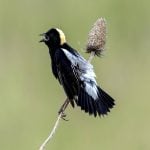
Canada and Ontario invest $14.6M to boost farmland resiliency and sustainability
Increased funding enables the Resilient Agricultural Landscape Program to expand its project scope to improve soil health, protect water resources, promote biodiversity, and support long-term sustainability and competitiveness.
Canada and Ontario increased investment of $14.6 million to help farmers improve soil, water, and biodiversity through the Resilient Agricultural Landscape Program.
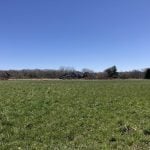
New demonstration farm coming to Bruce County
Ontario Farmland Trust investing in extension services for best management practices
A donated farm near Tiverton will allow the Ontario Farmland Trust and other organizations to demonstrate best management practices.
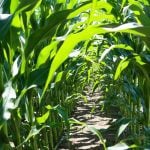
Plant tissue testing key to maximizing crop health and yield, say experts
Regular tissue analysis helps farmers detect nutrient deficiencies early, optimize fertilizer use and improve overall crop performance
How plant tissue testing plays a vital role in indentifying nutrient imbalances, improving fertilizer efficiency and boosting crop yields

Kerry Wright named new executive director of OSCIA
She has held key positions with organizations such as the Canadian Cattlemen’s Association, CAAIN, and Mallot Creek Group
Kerry Wright has been appointed the new executive director of the Ontario Soil and Crop Improvement Association.

Wet, cool spring raises replanting concerns
Experts cautiously optimistic with warm weather in the forecast
A cool, wet spring is prompting some Ontario farmers to consider replanting, but most early planted corn and soybeans will likely grow through any stunting and corkscrewing.
